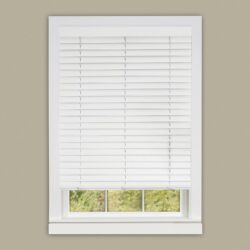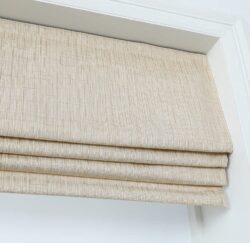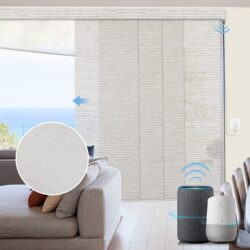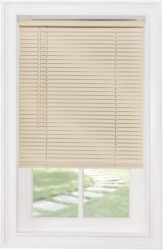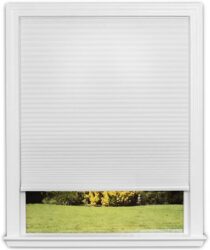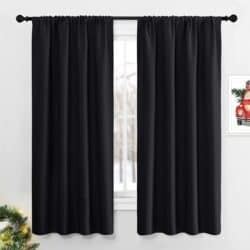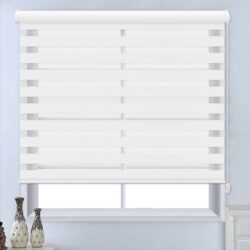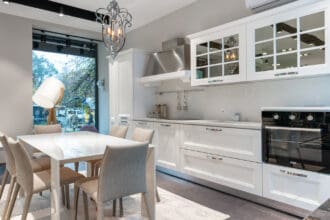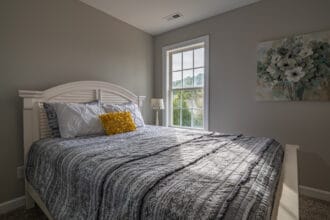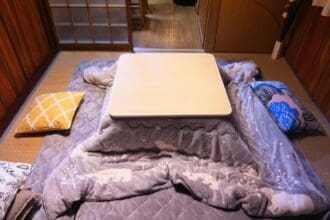
via: Pexels / Min An
Today, we're getting you familiar with the different types of blinds.
As an interior designer featured in Annie and Oak and The Zoe Report, I say that there are a lot of window blind styles that are aesthetically pleasing as room decorations. As for usage, blinds are adaptable and highly functional. And they aren't only good for window shades or decorations. Blinds are perfect housewarming gifts too!
From the types of window blinds to the right type of blinds for windows, this guide about the different types of blinds is all you need.
Contents
The 8 Best Types Of Blinds
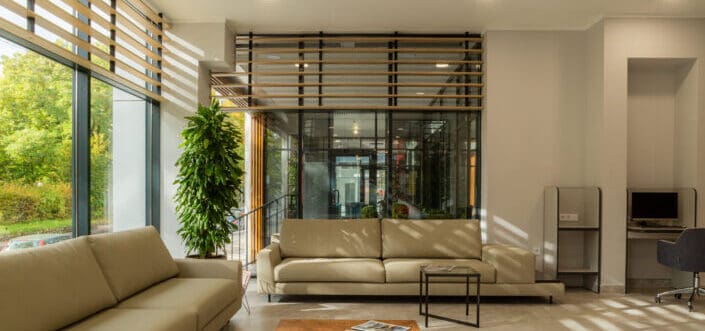
via: Pexels / Yura Forrat
Window blinds have remained a staple window covering in every household. Their style, functionality, and versatility have made them America's favorite when it comes to window treatments. Not sure where to start?
>
1. Vertical Blinds
Vertical blinds hang from a track and have slats that run up and down. Their vertical slats either rotate, pull together to the side, or part in the middle. They add visual height to any room and are super easy to clean!
Ideal for
A vertical blind is ideal for spaces with a contemporary or modern design and would look great on huge or floor-to-ceiling windows. So if you have a sliding door in your living room or your kitchen or a patio door going into your backyard, installing vertical blinds is a good idea.
2. Venetian Blinds
With its retro-modern style, this chair is the perfect accent for any room with a record player. It doesn't only exude style, but it's also comfortable.
Since the eighteenth century, Venetia blinds have been around and have remained incredibly popular today. They're made up of horizontal slats connected by a cord or a strip of fabric, but cordless versions are now available for households with young children.
Ideal for
A Venetian blind is ideal for covering small windows or single doors and is typically used in bedrooms, kitchens, and home offices.
3. Roman Blinds
Roman blinds, also known as a Roman shade, are classic window coverings that add a beautiful and timeless look to a home's interior design. A traditional Roman blind is made with fabric and raises and folds into itself, much like how a Venetian blind works.
Ideal for
Roman shades often have blackout and thermal features, making them perfect window treatments for your living room and bedroom.
4. Panel Blinds
Panel blinds feature sections that stack on top of one another. They're often made with fabric and, depending on the type, offer medium to sheer shades.
Ideal for
Panel blinds are also popular choices for single glass doors, patio doors, and large windows. They don't transfer as much heat as vertical blinds, which helps regulate the temperature in your home.
With its retro-modern style, this chair is the perfect accent for any room with a record player. It doesn't only exude style, but it's also comfortable.
5. Mini Blinds
Mini blinds operate the same way as Venetian blinds but feature thinner slats, usually about 1-inch thick. They're affordable, easy to clean, and highly effective at controlling light.
Ideal for
Just like a Venetian blind, panel blinds are ideal for small windows and single doors.
6. Micro Blinds
Micro blinds are tinier versions of mini blinds with slats that measure one-half inch thick.
Ideal for
Micro blinds function the same way mini blinds do and are perfect window shades for narrow openings.
7. Curtain Blinds
Curtain blinds, also called tie-up shades, are blinds that look like...well, curtains. This type of window shade is usually made out of fabric and has ties that hold out to the bottom of the shade. To use them, you only need to roll up the shade and tie it in place.
Ideal for
With its elegant and classy style, curtain blinds are perfect touches for living rooms to give them a more sophisticated vibe.
8. Modern Blinds
If you're into contemporary and sleek designs, there are a lot of modern versions of roller blinds, Venetian blinds, Roman blinds, vertical blinds, and even wooden blinds in the market.
Ideal for
With an array of designs, colors, and patterns, modern blinds are perfect for any room! Just don't forget to consider your window size, of course.
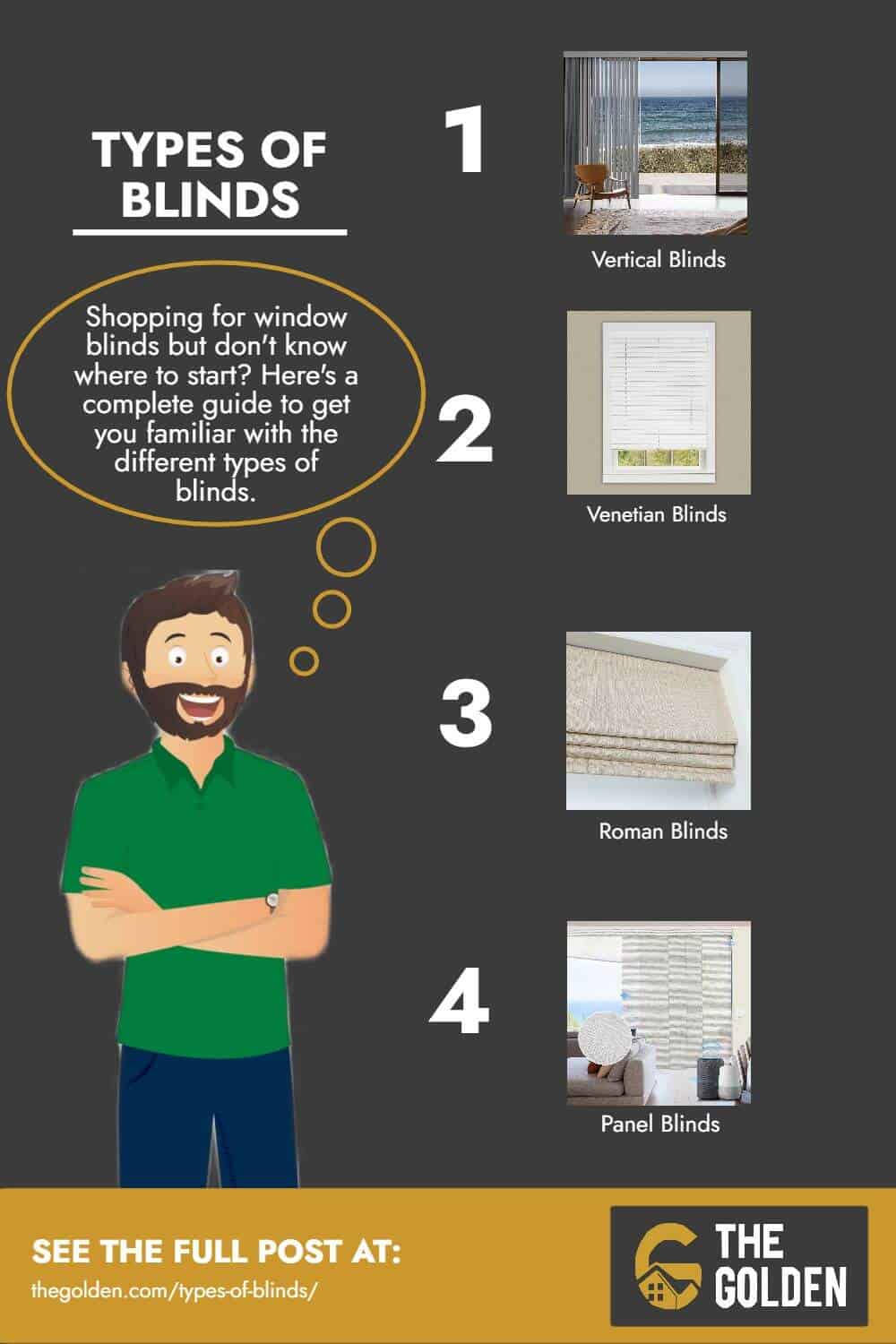
via: The Golden
Share This Image On Your Site
5 Things To Consider Before Buying Blinds

via: Unsplash / George Bakos
Before we head on to to the actual process of installing your blinds, you must first decide on the type of blind that is perfect for your home and, of course, your budget.
Generally, slats come in either 1/2 inch, 1 inch, or 2 inches. If you want a more contemporary look, the 1/2 inch slat is your best bet, but if you want a more vintage vibe, I'd suggest picking the 2-inch slats, just like with the retro design of a Venetian blind. On another note, a blind with a 1-inch slat is a perfect choice for windows with narrow frames.
When it comes to choosing a color for your blinds, picking neutral colors that match the shade of your window trim works best if you want to invest in a long-term, classic blind. But if you want your blind to match the color of your room, go ahead and pick whatever color you like. You do you.
Consider #1: The Material
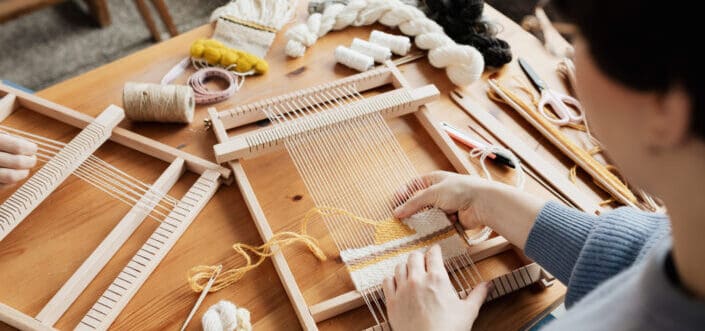
via: Pexels / Karolina Grabowska
Your choice of material for your window coverings should not only depend on your home's interior design but also your budget and the type of room you're installing it in.
Plastic
Plastic blinds are the most affordable of all materials. They're suitable for any room regardless and come in a lot of colors and sizes, so you can pretty much find a style that matches your home's interior design- even on a budget!
Fabric
Fabric blinds are either made of natural or synthetic fabrics, and both are very effective at insulation and blocking out sunlight. They're available as tie-up, roller, or Roman shades.
Natural fabric blinds are often crafted from cotton, jute, or seagrass and are durable and easy to clean. Compared to natural fabric shades, blinds made of synthetic fibers last longer and are highly resistant to fading.
It's also worth noting that fabrics blinds take in a lot of moisture, so they aren't the best option for your kitchen and bathroom windows.
Metal
Metal blinds or aluminum blinds are light, sturdy, and are easy to maintain. They're also rust-resistant, which makes them perfect window treatments for your bathroom and kitchen.
If you live in a tropical climate, I suggest getting aluminum blinds with a highly reflective surface on one side to help you save air conditioning costs.
Faux Wood
If you don't have a lot of money to spend but love the style of real wood, give faux wood a go. Faux wood blinds are made of synthetic materials, are moisture-resistant, and are perfect for high humidity rooms.
Wood
Real wood blinds can be quite expensive, but their style sure is evergreen. Their natural beauty adds a touch of warmth to any room. You can get them in different stains, types of wood, and colors.
Since wood is a natural material, a wood blind is susceptible to moisture and may warp, split, or break over time, so they're a little high maintenance.
Consider #2: The Operation

via: Pexels / Los Muertos Crew
Blinds allow you to control the light that goes in your room and privacy in your window, so how your blind raises should also be considered.
Tilting them up is a good idea to avoid any peeping Toms or prying eyes from seeing into your room. You also have better light control in the room with your blinds up because turning them down allows more heat and light to into the room.
Automatic
Automatic blinds have motors on the top of the blinds and can be adjusted by remote control. Their system comes with convenience, but a high price and can be more expensive than manual counterparts.
Manual
Manual blinds adjust by hand. Their mechanism uses a cord that you can pull to raise or lower the blinds. Manual blinds also use a rod that allows you to change the orientation of the slats and control the amount of light that enters your room.
Consider #3: The Features

via: Pexels / Ksenia Chernaya
Aside from the different styles and materials to choose from, blinds come with cool features too!
Cordless
Cordless blinds are popular choices for homeowners living with small children. They're easier to operate and can be adjusted with the touch of your hand.
Blackout
Blackout blinds use a special fabric that completely blocks external light. They're ideal for bedrooms and rooms that need complete privacy.
Thermal Insulation
Thermal insulation is a popular feature that comes with window treatments such as blinds or shades. Thermal insulating pockets or thermal fabric works as an additional layer for your window covering, keeping your room cool in the summer and warm in the winter.
Sheer
Sheer shades have slats that can be adjusted to control the light that enters your room. They pretty much function the way blinds do but provide a softer style of shade.
Consider #4: The Purpose
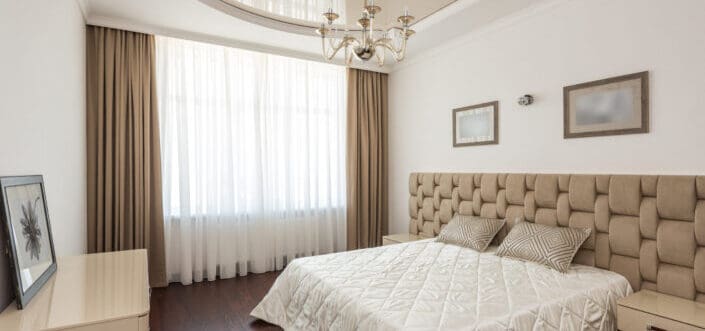
via: Pexels / Max Vakhtbovych
The right kind of blind ties a room together and can create a perfect space for living, working, and even playing!
Work
If you're shopping for blinds for your home office or working area, you might want to avoid metal blinds as they tend to be very noisy and may affect your focus.
A well-lit workspace also helps with productivity, so you might want to stick with blinds that allow an ample amount of light into your room.
Study
Likewise, for studying, go for blinds with sheer shades to allow enough light to enter your room.
Sleep
Roman blinds are great window treatments for your bedroom. You might want to get one that has a blackout and thermal insulation for added comfort. Whatever helps you sleep better at night.
Privacy
If you have a large window in your bedroom, stick with a Venetian blind. If you have a glass wall for your office, blackout blinds might come in handy for private meetings.
If your house consists of many glass doors, installing panel blinds or vertical blinds adds a sense of security and privacy during the night.
Consider #5: The Place
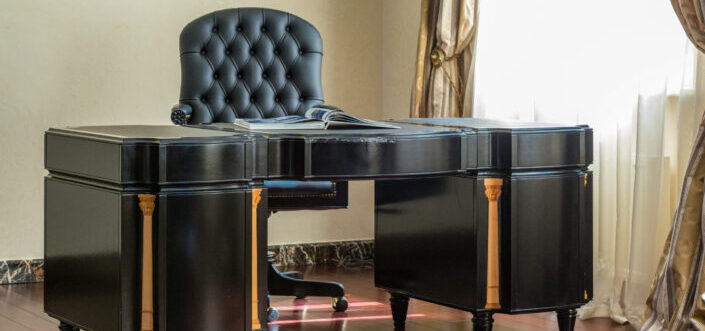
via: Pexels / Max Vakhtbovych
Not all blinds work the same way. Some blinds material might suit your living room but not your bathroom.
Living Room
If you have a modern home design, vertical blinds work. If you want a more vintage vibe, Venetian blinds are perfect for you.
If you want a classier and softer look, fabric blinds, curtain blinds, and panel blinds always add an elegant look.
Bedroom
Blackout blinds and blinds with thermal insulation will keep you warm and cozy while sleeping.
Kitchen
Almost any window blind works for kitchen windows except blinds made of fabric or wood.
Bathroom
For bathroom windows, avoid blind materials that retain a lot of moisture. Fabric blinds and wood blinds absorb a lot of moisture and may mold over time.
How To Install Window Blinds

via: Unsplash / Ethan Sykes
For those of you who like to do it yourself, installing a window blind is pretty easy.
1. Get Your Window’s Measurement

via: Unsplash / Toa Heftiba
Before shopping for blinds, you'll first need to decide where you'd like to install them. You can either set them up above the window trim, directly onto the window trim or inside the window casing.
Find the width of your window by measuring the top, middle, and bottom, and use the shortest measurement as your final blind width. Find the window's height by measuring its size at the left, middle, and right, and use the longest measurement as your final blind height. Once you have your measurements with you, go to the store and have them fashion a custom window blind.
2. Install the Brackets

via: Pexels / Ksenia Chernaya
You will have to attach the brackets above the inner window casing, about 1/2 inch off the windowpane.
Make plot holes for the brackets using a drill and a drill bit that's smaller than your screws. Next, hold the brackets in place and attach them to the window casing.
Finally, slide your blinds into the brackets and lock them in place.
3. Attach the Trim Piece

via: Pexels / Ksenia Chernaya
To install the trim piece, all you have to do is snap the clips onto the top of your blinds, left and right. Finally, set your trim piece into place using the clips.
4. Test the Blinds

via: Pexels / cottonbro
Test the blinds by making sure they open and close properly.
3 Ways To Maintain Your Blinds

via: Unsplash / Sincerely Media
Whether they're faux wood or metal blinds, routine cleaning will keep your blinds looking brand new for days.
Way #1: Have the Right Cleaning Materials

via: Pexels / RODNAE Productions
You need a soft cleaning cloth for wiping specks of dust off of your blinds. I find microfiber cloths to be the most effective for clearing away any lint or dust.
If you want it fast and easy, using a vacuum cleaner also works for brushing away dirt from your blinds. When cleaning with a vacuum cleaner, use the lowest setting on the suction to avoid damaging the slats.
A mixture of soap and water or vinegar and water works well for getting rid of stubborn dirt and stains.
Way #2: Keep a Regular Cleaning Schedule

via: Pexels / Jess Bailey Designs
Window blinds collect dirt and dust every day, so it's best to clean them daily. If you can't commit to cleaning your blinds every day, at least clean them once a week.
Maintaining a cleaning schedule is necessary to prevent any bacteria or dust mites from clinging to your blinds.
Deep cleaning your blind once a month also keeps them well-maintained.
Way #3: Consider the Type of Blind

via: Pexels / Andrew Neel
When cleaning your blinds, it's also important to consider the type you have.
Block-out and roller blinds, for example, should not be scrubbed or cleaned using harsh chemicals to avoid damaging their coating. Using a vacuum cleaner or compressed air is best for cleaning a Venetian blind.
Cleaning wooden blinds is as easy as wiping the dust off with a soft, dry cloth. If you have fabric blinds, clean them with a wet cloth that doesn't bleed color.
Treating stains on your Roman blinds requires a special stain remover.
Frequently Asked Questions

via: Pexels / Edmond Dantès
Here are more facts and important information you need to know about this shady household staple.
Who invented the first window blinds?
In 1769, English man Edward Bevan patented the first Venetian blinds. He discovered you could control the light that goes into a room by placing wooden slats on an aluminum frame.
But if we're going way back, blinds have been around since ancient times. Desert people would use wet strips of cloth to cover the windows of their huts. Roman people also have their own type of window blind using a special kind of fabric.
Egyptians would string reeds to make blinds that raise or lower, just like today's roller shade. On the other hand, the Chinese would use bamboo sticks, which are sturdier than reeds.
What are the best blinds for windows?
Your choice of indoor blinds primarily depends on the purpose they will serve and, of course, the type of window you have.
Vertical blinds and panel blinds are great for huge or floor-to-ceiling windows and pair well on sliding glass doors or patio doors. On the other hand, Venetian blinds and mini blinds work best for narrow windows, but if you're going for a softer look, pleated shades and honeycomb shades work too.
If your focus is style, some of the best options are Roman shades, curtain blinds, wooden blinds, and faux wood blinds.
If you're not a morning person or someone who generally hates the light, micro blinds offer the best shade. If you want to reduce the amount of sunlight or glare in your room, I suggest using solar shades. Conservatory blinds are also great options as skylight shades.
If you're tech-savvy and can't be bothered with raising or lowering your blinds, investing in smart blinds, automatic blinds, or motorized blinds is a good idea.
How much are window blinds?
On average, prices range from $6 to $200. Blinds made of plastic materials, vinyl blinds, for example, are the least expensive, while real wood blinds like plantation shutters are the most costly.
If you have a lot of money to spend, high-tech interior installations for a window covering like automatic blinds and motorized blinds may cost around $400 to $600.
How long do window blinds last?
A window blind usually lasts seven to eight years and depends on the quality of the product, so it's best to invest in blinds with great value for money.
Of course, how you take care of them also matters, so remember to clean them regularly if you want them to last for a long time without any damage.
More Types of Home Items You Need To Know
Whether you're a man or a woman, it pays to be handy with tools at home. It saves you a lot of time and money and makes you appreciate your house better. Did I mention the added confidence boost? I mean, a handyman or woman is always impressive.
- Any home project almost always requires the use of cutting tools. This guide will teach you all about the different types of saws and their uses.
- You use it for studying, working, dining, and even for decorating, so you might as well get familiar with the different types of desks. From classics to Avant-garde pieces, this guide has a lot of shopping advice.
- Whether for packing, fixing, or arts and crafts, different types of tapes fit your needs. Yup. We have a guide for that too.
In Conclusion
Blinds are perfect window treatments, decorations, and even housewarming gifts.
Now that you're familiar with the different types of blinds, it should be easier for you to shop for one.
If you enjoyed this article, share it with your friends! Being familiar with the different types of blinds makes all the difference for smart housekeeping.










